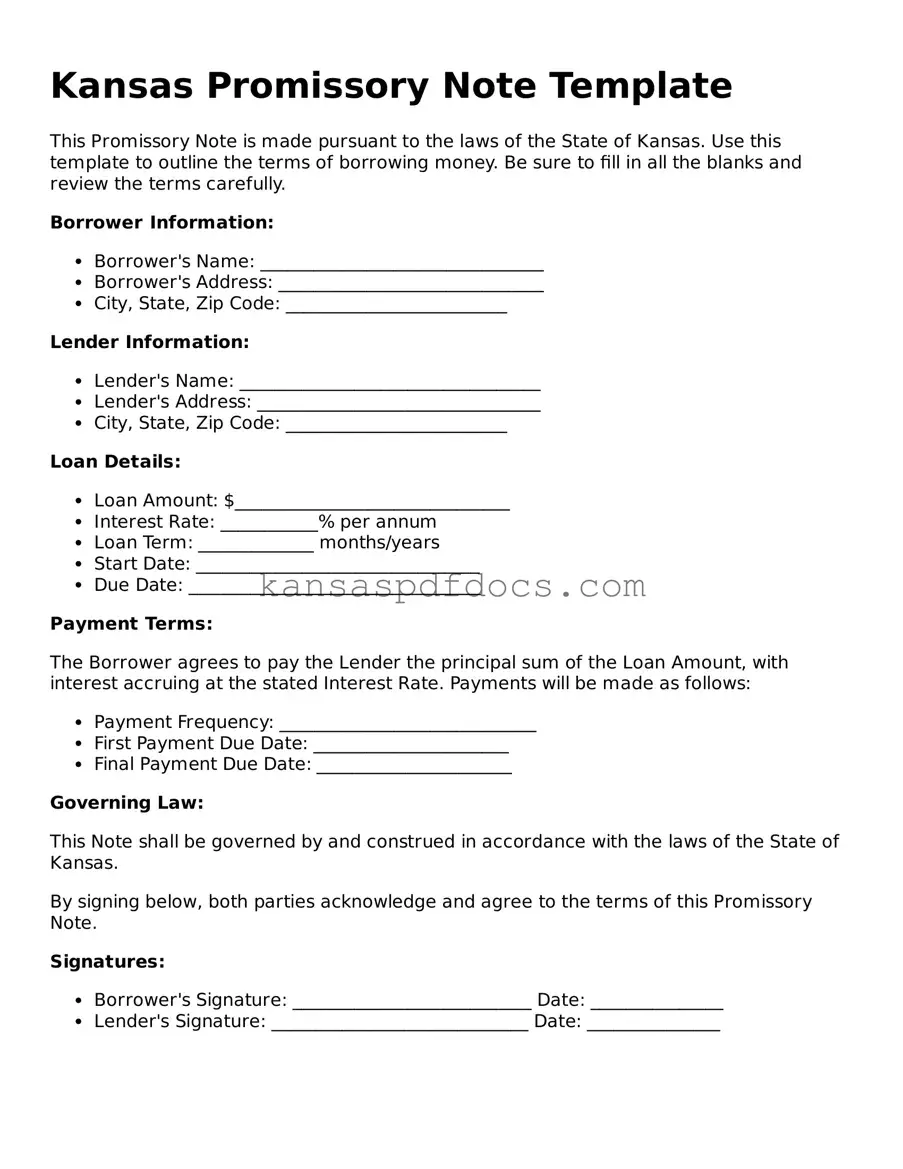The Kansas Promissory Note form is a crucial document used in financial transactions where one party agrees to pay a specific amount of money to another party at a designated time. This form outlines the borrower's commitment to repay the loan, including details such as the principal amount, interest rate, payment schedule, and any applicable fees. It serves as a legal record of the agreement between the lender and the borrower, ensuring that both parties understand their rights and responsibilities. In Kansas, this form can be tailored to meet the unique needs of the transaction, whether it involves personal loans, business financing, or real estate purchases. Additionally, the document may include provisions for default, allowing the lender to take appropriate actions if the borrower fails to meet their obligations. Understanding the key components of the Kansas Promissory Note is essential for anyone involved in lending or borrowing, as it protects both parties and helps facilitate smooth financial transactions.
